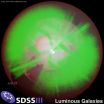People mimic each other, but we aren't chameleons
2012-01-13
(Press-News.org) It's easy to pick up on the movements that other people make—scratching your head, crossing your legs. But a new study published in Psychological Science, a journal of the Association for Psychological Science, finds that people only feel the urge to mimic each other when they have the same goal.
It's common for people to pick up on each other's movements. "This is the notion that when you're having a conversation with somebody and you don't care where your hands are, and the other person scratches their head, you scratch your head," says Sasha Ondobaka of the Donders Institute for Brain, Cognition and Behaviour at Radboud University Nijmegen in the Netherlands. He cowrote the paper with Floris P. de Lange, Michael Wiemers, and Harold Bekkering of Radboud and Roger D. Newman-Norlund of the University of South Carolina. This kind of mimicry is well-established, but Ondobaka and his colleagues suspected that what people mimic depends on their goals.
"If you and I both want to drink coffee, it would be good for me to synchronize my movement with yours," Ondobaka says. "But if you're going for a walk and I need coffee, it wouldn't make sense to be coupled on this movement level."
Ondobaka and his colleagues devised an experiment to see how much of a pull people feel to mimic when they have the same or different goals from someone else. Each participant sat across from an experimenter. They played a sort of card game on a touch screen embedded in the table between. First, two cards appeared in front of the experimenter, who chose either the higher or the lower card. Then two cards appeared in front of the participant. This happened 16 times in a row. For some 16-game series, the participant was told to do the same as the experimenter—to choose the higher (or lower) card. For others, they were told to do the opposite. Participants were told to move as quickly and as accurately as possible.
When the participant was supposed to make the same choice as the experimenter, they moved faster when they were also reaching in the same direction as the experimenter. But when they were told to do the opposite of the experimenter—when they had different goals—they didn't go any faster when making the same movement as the other person. This means having different goals got in the way of the urge to mimic, Ondobaka says.
The researchers think that people only copy each other's movements when they're trying to accomplish the same thing. The rest of the time, actions are more related to your internal goals. "We're not walking around like chameleons copying everything," Ondobaka says. If you're on a busy street with dozens of people in view, you're not copying everything everybody does—just the ones that have the same goal as you. "If a colleague or a friend is going with you, you will cross the street together."
###
For more information about this study, please contact: Sasha Ondobaka at s.ondobaka@donders.ru.nl.
The APS journal Psychological Science is the highest ranked empirical journal in psychology. For a copy of the article "Interplay Between Action and Movement Intentions During Social Interaction" and access to other Psychological Science research findings, please contact Divya Menon at 202-293-9300 or dmenon@psychologicalscience.org.
END
ELSE PRESS RELEASES FROM THIS DATE:
2012-01-13
SEATTLE – Among overweight and obese adults, a diet rich in slowly digested carbohydrates, such as whole grains, legumes and other high-fiber foods, significantly reduces markers of inflammation associated with chronic disease, according to a new study by Fred Hutchinson Cancer Research Center. Such a "low-glycemic-load" diet, which does not cause blood-glucose levels to spike, also increases a hormone that helps regulate the metabolism of fat and sugar. These findings are published online ahead of the February print issue of the Journal of Nutrition.
The controlled, ...
2012-01-13
PASADENA, Calif. -- A team of astronomers led by scientists at the California Institute of Technology (Caltech) has discovered the three smallest confirmed planets ever detected outside our solar system. The three planets, which all orbit a single star, are smaller than Earth and appear to be rocky with a solid surface. Until now, astronomers have found at most only four other rocky planets, also called terrestrial planets, around other stars.
The trio of new planets is too close to the central star to be in its habitable zone—the ring-shaped region around a star where ...
2012-01-13
Using NASA's Hubble Space Telescope, astronomers have solved a longstanding mystery on the type of star, or so-called progenitor, which caused a supernova seen in a nearby galaxy. The finding yields new observational data for pinpointing one of several scenarios that trigger such outbursts.
Based on previous observations from ground-based telescopes, astronomers knew the supernova class, called a Type Ia, created a remnant named SNR 0509-67.5, which lies 170,000 light-years away in the Large Magellanic Cloud galaxy.
Theoretically, this kind of supernova explosion is ...
2012-01-13
Important new information on one of the most critical protein machines in living cells has been reported by a team of researchers with the U.S. Department of Energy's Lawrence Berkeley National Laboratory (Berkeley Lab) and the University of California (UC) Berkeley. The researchers have provided the most detailed look ever at the "regulatory particle" used by the protein machines known as proteasomes to identify and degrade proteins that have been marked for destruction. The activities controlled by this regulatory particle are critical to the quality control of cellular ...
2012-01-13
January 11, 2012 -- New research conducted in the Center for Infection and Immunity (CII) at Columbia University's Mailman School of Public Health, reports that children with autism and gastrointestinal disturbances have high levels of a bacterium called Sutterella in their intestines.
Study findings are published online in the journal mBio.
The investigators found that over half of the children diagnosed with autism and gastrointestinal disturbances had Sutterella in intestinal biopsy tissue, while Sutterella was absent in biopsies from typically developing children ...
2012-01-13
Detroit - Exposure to light appears to have therapeutic effects on Alzheimer's disease patients, a Wayne State University researcher has found.
In a study published recently in the Western Journal of Nursing Research, LuAnn Nowak Etcher, Ph.D., assistant professor of nursing, reported that patients treated with blue-green light were perceived by their caregivers as having improved global functioning.
Caregivers said patients receiving the treatment seemed more awake and alert, were more verbally competent and showed improved recognition, recollection and motor coordination. ...
2012-01-13
New evidence this week supports a theory developed five years ago at Rice University to explain the electrical properties of several classes of materials -- including unconventional superconductors -- that have long vexed physicists.
The findings in this week's issue of Nature Materials uphold a theory first offered in 2006 by physicist Qimiao Si, Rice's Harry C. and Olga K. Wiess Professor of Physics and Astronomy. They represent an important step toward the ultimate goal of creating a unified theoretical description of the quantum behavior of high-temperature superconductors ...
2012-01-13
Interferon-stimulated gene 15 (ISG15), a ubiquitin like protein, is highly elevated in a variety of cancers including breast cancer. How the elevated ISG15 pathway contributes to tumorigenic phenotypes remains unclear and is the subject of a study published in the January 2012 issue of Experimental Biology and Medicine. Dr. Shyamal Desai and her co-investigators from the Louisiana State University School of Medicine in New Orleans, the University of Pennsylvania School of Medicine in Philadelphia, and the Robert Wood Johnson School of Medicine in New Jersey report that ...
2012-01-13
Since 2000, the three Sloan Digital Sky Surveys (SDSS I, II, III) have surveyed well over a quarter of the night sky and produced the biggest color map of the universe in three dimensions ever. Now scientists at the U.S. Department of Energy's Lawrence Berkeley National Laboratory (Berkeley Lab) and their SDSS colleagues, working with DOE's National Energy Research Scientific Computing Center (NERSC) based at Berkeley Lab, have used this visual information for the most accurate calculation yet of how matter clumps together – from a time when the universe was only half its ...
2012-01-13
MADISON –Placing a stent in a key artery in the neck is safer than ever in patients ineligible for the standard surgical treatment of carotid artery disease, according to a new study published online today in the Journal of Vascular Surgery.
A team of researchers led by Dr. Jon Matsumura, head of the vascular surgery division at University of Wisconsin School of Medicine and Public Health, found the clinical trial PROTECT (Carotid Artery Stenting with Distal Embolic Protection with Improved System) had the lowest rate of complications ever in patients considered high ...
LAST 30 PRESS RELEASES:
[Press-News.org] People mimic each other, but we aren't chameleons



